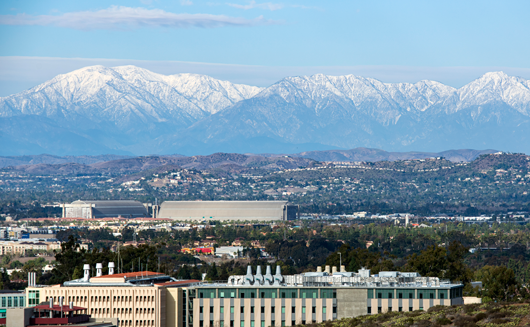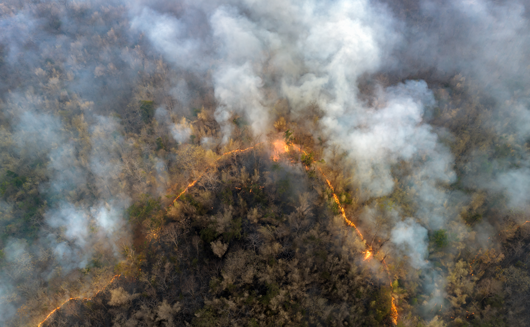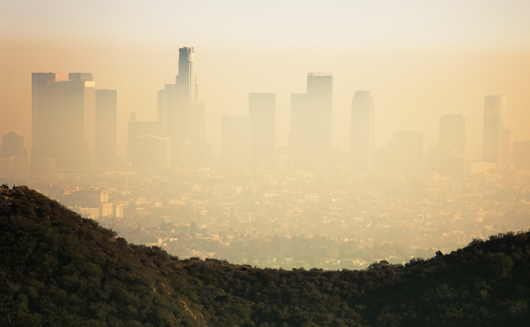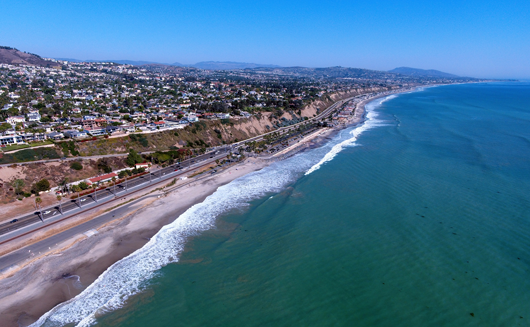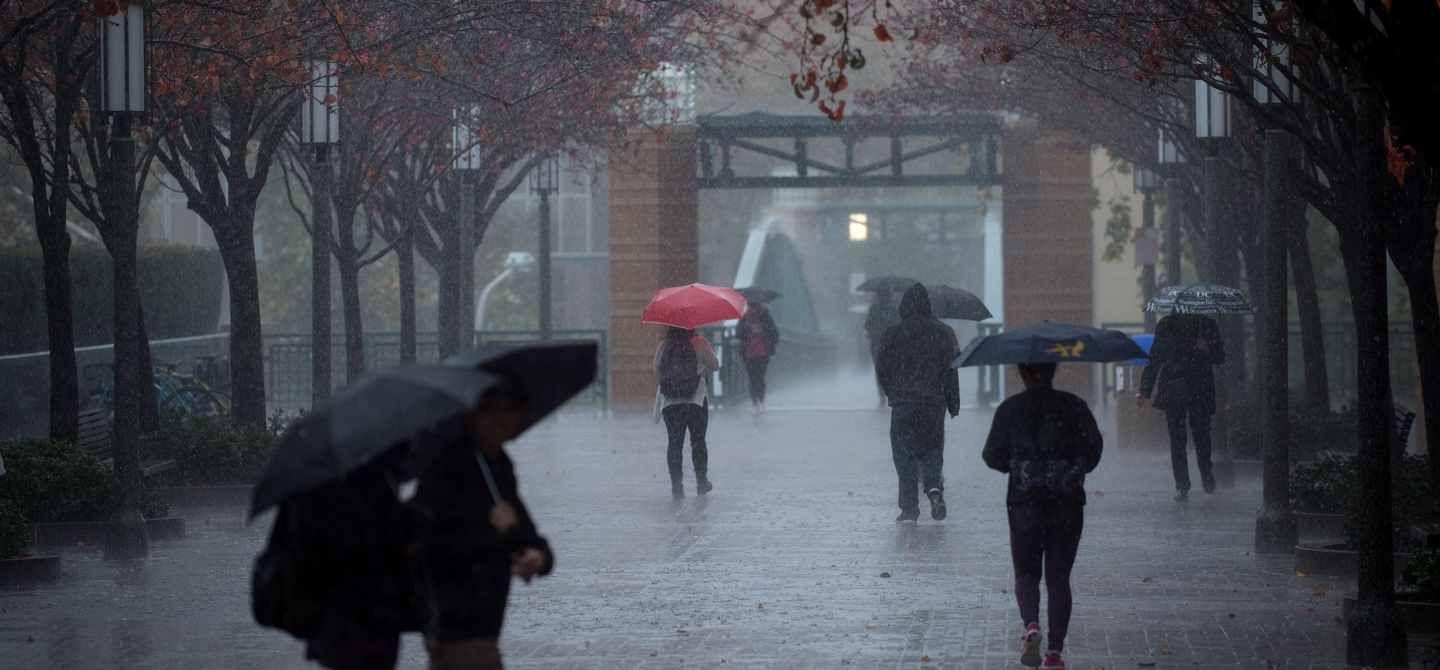
What’s happening with El Niño?
Climate change may be shifting and lengthening an ocean temperature phenomenon that can cause rainy winters in California
The nature of El Niño – a warming of tropical waters in the Pacific Ocean that can lead to heavier-than-usual rain and snowfall in California during the state’s winter wet season – has changed in recent years.

UCI atmospheric scientist Jin-Yi Yu says he has begun to wonder if global warming has both shifted the position of the hemisphere-spanning phenomenon and caused a lengthening of its duration, making it less reliable as a moisture motivator.
“Traditionally, El Niño has lasted only about a year, but we noticed that the recent El Niños were multi-year events,” Yu, a professor of Earth system science, says.
The strongest El Niño of the 20th century started in the spring of 1997 and ended after the summer of 1998, which was, at the time, about the length climatologists would expect. But Yu says the 2015-2016 El Niño is misnamed, because it really began in 2014.
“I now refer to it as the 2014-to-2016 El Niño to reflect its multiyear duration,” he says.
Yu added that the mid-teens El Niño was as powerful as the one in the ’90s in terms of the warming of Pacific waters, but the more recent event brought considerably less precipitation.
“You may recall that the 2014-to-2016 super El Niño did not bring above-normal rainfall to California, while the one that happened in 1997 and ’98 brought record-breaking rainfall to many California cities, including Los Angeles,” he says.
“We are going to work to find out what this precondition is and whether or not it is true that global warming is going to permanently make El Niño a multiyear versus a single-year phenomenon in the future... If the answer to the multiyear question is ‘yes,’ then future El Niño events may not bring as much rainfall to California as they used to.”- Jin-Yi Yu
Yu was co-author of a 2017 paper in the American Geophysical Union journal Geophysical Research Letters that suggested the disparate precipitation levels were caused by a shift in the central location of the two El Niño events.
“The 1997-98 super El Niño had its warm sea surface temperatures located more to the east of the tropical Pacific, while the 2014-16 super El Niño had its warm waters close to the international dateline,” Yu says. “The location difference caused the two super El Niño events to disturb the Pacific jet stream – and therefore the storm track – in different ways and to bring different impacts to California rainfall.”
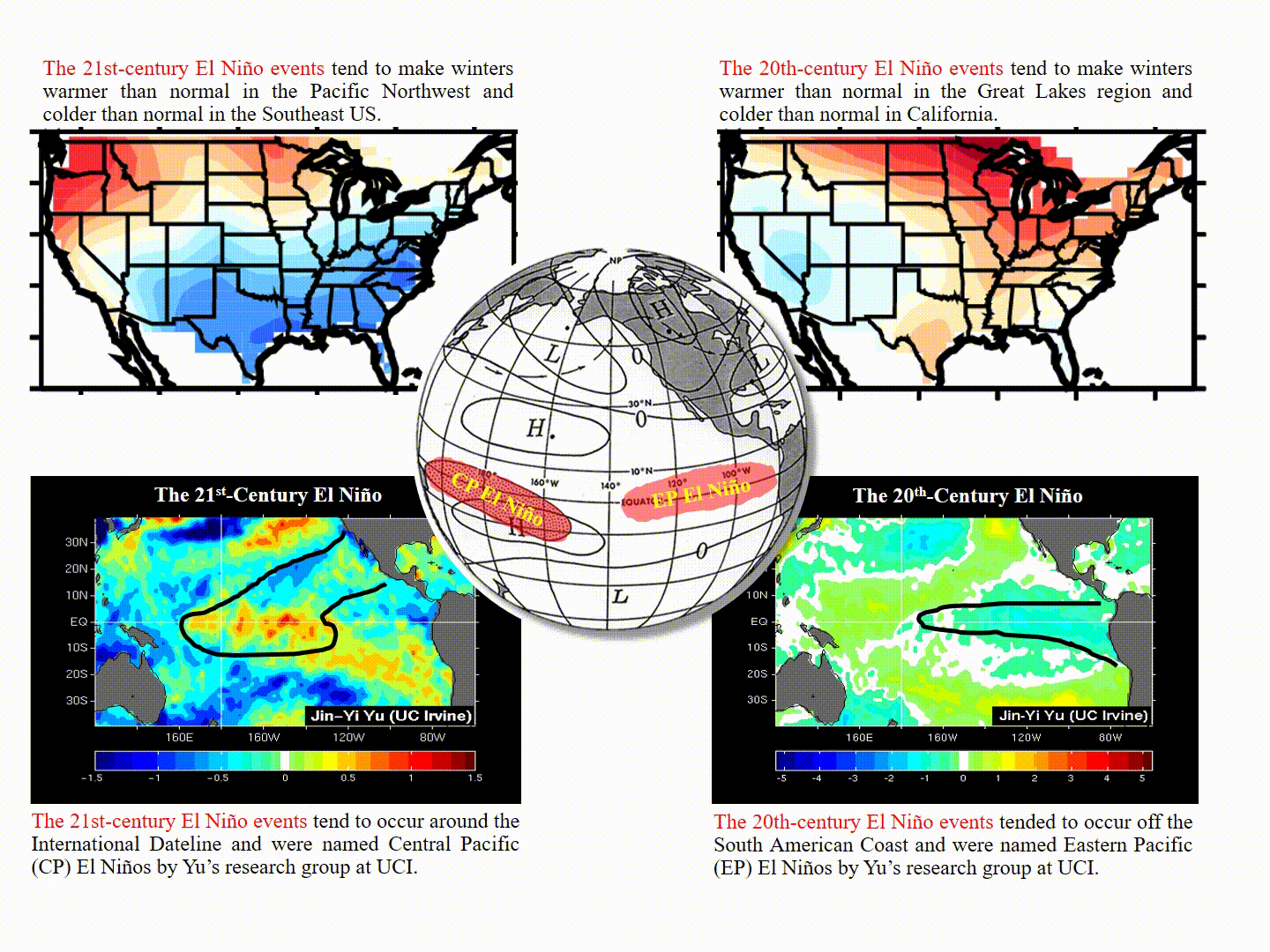
Yu says this repositioning of El Niño water warming in the Pacific may be just part of the story. He says the mid-teens super El Niño was most likely “preconditioned” by an additional year of elevated sea surface temperature.
For a new project recently funded by the National Science Foundation, Yu and his colleagues will investigate connections between the change in El Niño’s position in the ocean, its longer timespan and California’s rain forecasts.
“We are going to work to find out what this precondition is and whether or not it is true that global warming is going to permanently make El Niño a multiyear versus a single-year phenomenon in the future,” he says. “If the answer to the multiyear question is ‘yes,’ then future El Niño events may not bring as much rainfall to California as they used to.”
– Brian Bell, UCI
